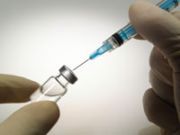New Warning: Warfarin Plus Diabetes Drugs Can Cause Adverse Effects
People who take a common drug for type 2 diabetes may be at risk for serious drug interactions if they add the blood thinner warfarin to the mix.

Emergency physicians might want to check to see if patients with diabetes who come into the hospital after falls or other events are taking warfarin.
People who take a common drug for type 2 diabetes may be at risk for serious drug interactions if they add the blood thinner to the mix.
Researchers report that patients who take a class of diabetes drug called sulfonylureas experienced a higher incidence of hospitalizations and emergency department visits for falls, confusion, hypoglycemia, and insulin shock.
A team from the University of California in Los Angeles found that warfarin intensifies the effects of the sulfonylureas and cause blood sugar levels to plummet. The effect is that patients seem drunk, light-headed, and confused — and at risk for falls and injuries as well as insulin shock.
In a random sample of 465,918 Medicare beneficiaries, the team identified 2,111 patients who were taking warfarin and sulfonylureas and suffered severe episodes of hypoglycemia. They found that hospital visits were 22 percent higher among Medicare patients taking the two drugs; moreover, 78% of those patients had multiple visits and admissions per year. These visits average $20,500 per hospital stay and treatments for fall-related medical conditions cost an additional $12,300 per stay.
Although an adverse event is serious, that does not mean patients cannot take the two drugs together, the authors said.
“The take-home message is simply that an interaction can occur that has clinical significance, so providers need to be aware in order to prevent a low blood sugar issue from occurring,” said Anne Peters, MD, CDE, the study’s co-author and professor at the Keck School of Medicine at USC. “Sometimes this means having the patient monitor their blood sugar levels more often," they wrote, adding, "There are many ways to deal with the issue if one is forewarned.”
The study appears in the December 7, 2015, issue of the British Medical Journal.